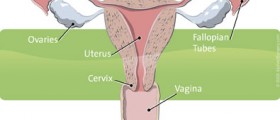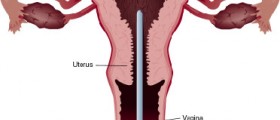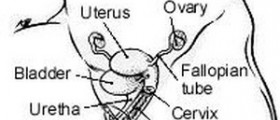
Endometrial cancer is a malignant tumor predominantly affecting older women, most commonly those who have entered menopause. It stems from endometrial cells, those lining the inside of the uterus. Another name for endometrial cancer is uterine cancer and it must be differentiated from cervical cancer. Firstly, these two cancers affect different parts of the uterus and secondly, they originate from different cells. Also, cervical cancer may affect women of all ages while endometrial cancer is most frequently reported among older women.
What are Symptoms and Signs of Endometrial Cancer?
In the majority of cases endometrial cancer is responsible for abnormal vaginal bleeding which is the reason why women visit their gynecologists.
Bleeding is particularly a suspicious sign if a woman has entered menopause and there is no monthly bleeding. In case the woman in still in her reproductive years, there may be bleeding between periods, abnormal, watery or blood-tinged discharge from the vagina and pelvic pain. Pain during intercourse is another symptom which may or may not be associated with the presence of endometrial cancer.
If there is any of the mentioned present, a woman is due to consult her doctor as soon as possible because only early detection may lead to complete eradication of the disease.
Women at Risk
The occurrence of endometrial cancer is closely connected with several risk factors. For instance, the tumor is more reported in women in whom the level of estrogen is high while the level of progesterone remains within optimal limits. This is reported in case of polycystic ovary syndrome, obesity and diabetes.
Furthermore, the tumor is also reported to occur more in women whose menstruation started at an early age (before age 12) or those who have entered menopause rather late.
If a woman has never given birth or has never been pregnant, she is also at risk for endometrial cancer. Finally, endometrial cancer affects older women, those on hormone therapy for breast cancer and may occur in women with an inherited colon cancer syndrome such as hereditary nonpolyposis colorectal cancer.
Diagnosing Endometrial Cancer
Taking a medical history and evaluating all the risk factors may be of great help when diagnosing endometrial cancer. However, it is also essential to perform several additional tests and exams in order to confirm the presence of the disease.
The doctor first performs a pelvic exam. This exam allows insight into the vagina and the cervix (the exterior part of the cervix). The inside of the uterus is inspected with the assistance of ultrasound.
If anything suspicious has been detected on ultrasound, a woman further undergoes hysteroscopy. This procedure includes insertion of a thin and flexible tube. It lights the inside of the uterus and helps doctor examine all portions of the organ. During the procedure samples of the endometrium are taken and then sent for pathohistological examination. If tissue taken during hysteroscopy has not been sufficient enough for conformation of cancer, doctors perform dilation and curettage and then repeat laboratory testing. Once the cancer is confirmed, the disease is staged and patients recommended the most suitable treatment options.

















Your thoughts on this
Loading...